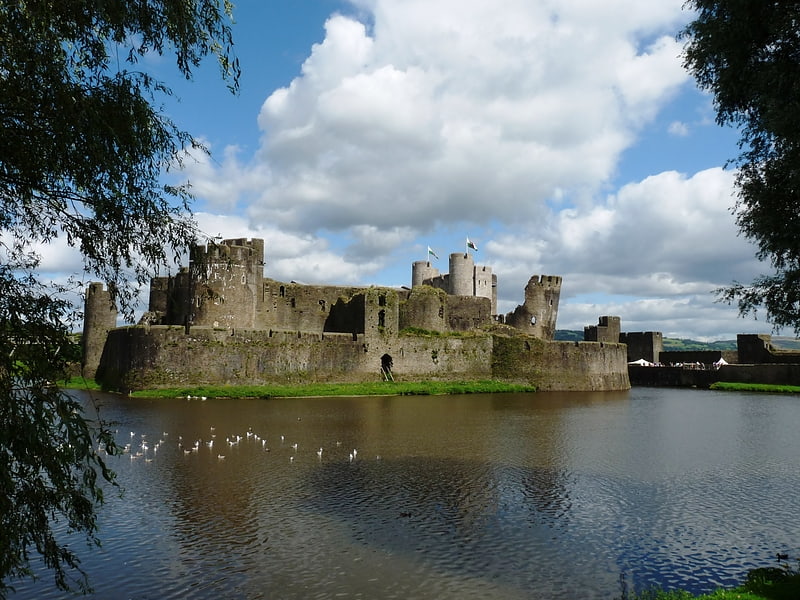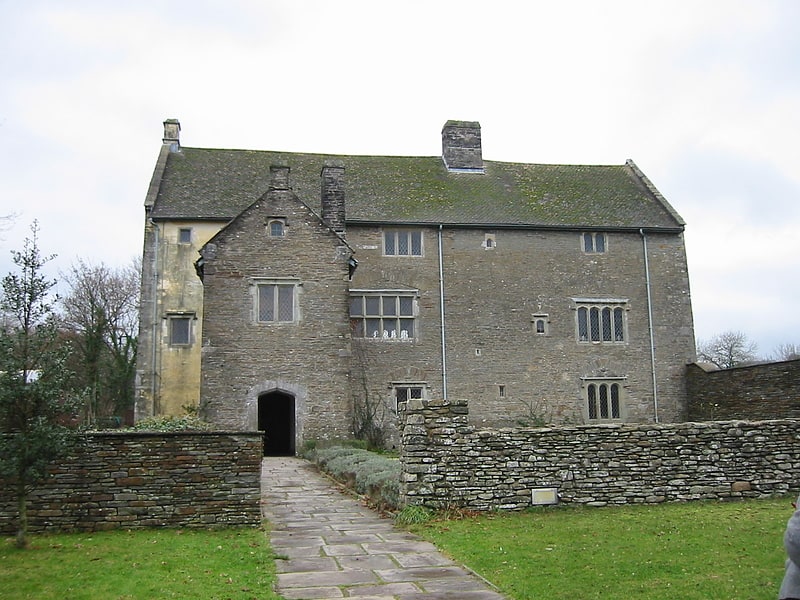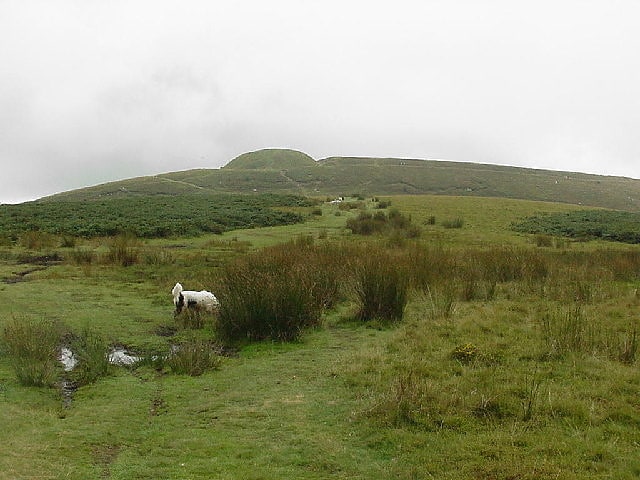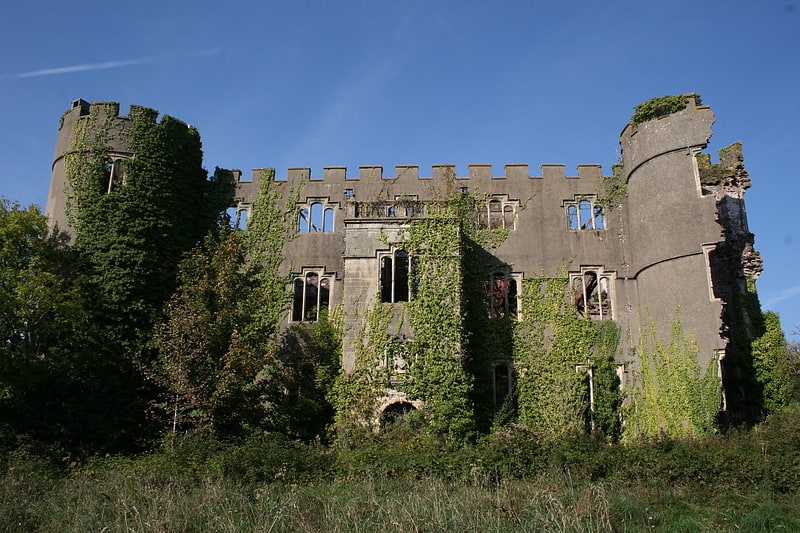Discover 5 hidden attractions, cool sights, and unusual things to do in Caerphilly (United Kingdom). Don't miss out on these must-see attractions: Caerphilly Castle, Llancaiach Fawr Manor, and Twmbarlwm. Also, be sure to include Caerphilly mountain in your itinerary.
Below, you can find the list of the most amazing places you should visit in Caerphilly (Wales).
Table of Contents
Caerphilly Castle

Medieval castle with impressive defences. Caerphilly Castle is a medieval fortification in Caerphilly in South Wales. The castle was constructed by Gilbert de Clare in the 13th century as part of his campaign to maintain control of Glamorgan, and saw extensive fighting between Gilbert, his descendants, and the native Welsh rulers. Surrounded by extensive artificial lakes – considered by historian Allen Brown to be "the most elaborate water defences in all Britain" – it occupies around 30 acres and is the largest castle in Wales and the second-largest castle in the United Kingdom after Windsor Castle. It is famous for having introduced concentric castle defences to Britain and for its large gatehouses. Gilbert began work on the castle in 1268 following his occupation of the north of Glamorgan, with the majority of the construction occurring over the next three years at a considerable cost. The project was opposed by Gilbert's Welsh rival Llywelyn ap Gruffudd, leading to the site being burnt in 1270 and taken over by royal officials in 1271. Despite these interruptions, Gilbert successfully completed the castle and took control of the region. The core of Caerphilly Castle, including the castle's luxurious accommodation, was built on what became a central island, surrounding by several artificial lakes, a design Gilbert probably derived from that at Kenilworth. The dams for these lakes were further fortified, and an island to the west provided additional protection. The concentric rings of walls inspired Edward I's castles in North Wales, and proved what historian Norman Pounds has termed "a turning point in the history of the castle in Britain".
The castle was attacked during the Madog ap Llywelyn revolt of 1294, the Llywelyn Bren uprising in 1316 and during the overthrow of Edward II in 1326–27. In the late 15th century, however, it fell into decline and by the 16th century the lakes had drained away and the walls were robbed of their stone. The Marquesses of Bute acquired the property in 1776 and under the third and fourth Marquesses extensive restoration took place. In 1950 the castle and grounds were given to the state and the water defences were re-flooded. In the 21st century, the Welsh heritage agency Cadw manages the site as a tourist attraction.[1]
Address: Castle Street, CF83 1JD Caerphilly
Llancaiach Fawr Manor

Building in Wales. Llancaiach Fawr Manor is a Tudor manor house near the village of Nelson, located just to the north of the site of the former Llancaiach Colliery in the heart of the Rhymney Valley in South Wales. The semi-fortified house was built on the site of an earlier medieval structure, either on top of the previous dwelling or possibly incorporated within the eastern end of that building. It is a Grade I listed building and is now best known as the home of Colonel Edward Prichard, who hosted a visit by King Charles I of England in 1645.
Llancaiach Fawr Manor was at one time thought to have predated the Acts of Union between Wales and England of 1536 and was talked about in John Leland’s Itinerary of 1537. The manor house is thought to have been built in about 1530 for one Dafydd ap Richard. (Prichard being a modernised form of the patronymic "ap Rhisiart"). However, dendrochronology results (from a Time Team excavation) indicate a felling date for the roof timbers of 1548–1565, later than was originally thought.
The Manor is considered to be one of the most important gentry houses to have survived from the 16th and 17th century period. It is now open to visitors as a living history museum.[2]
Address: Gelligaer Road, Caerphilly
Twmbarlwm

Summit in Wales. Twmbarlwm, also known as Twm Barlwm, Twyn Barlwm or locally known as "the Twmp", the Nipple or the Pimple because of the mound that lies at its summit, is a hill situated 2 km to the northeast of Risca in South Wales. It is often mistakenly referred to as a mountain but is actually a hill due to being under 600 m. It is 419 m high and is a well-known landmark throughout the region. It commands extensive views across what is now the M4 corridor, over Newport and Cwmbran - with part of it coming into Cwmbran - and out over the Bristol Channel.[3]
Caerphilly mountain

Mountain. Caerphilly Mountain lies between Cardiff and Caerphilly at the southern edge of the South Wales Coalfield. Its summit is 271 metres above sea-level.
Since 1957 there had been a small wooden snack bar near to the summit. In September 2011 this was replaced by an eco-friendly permanent building, with under floor heating, solar panels and rainwater-flushed toilets, at a cost of £300,000. The mountain includes Caerphilly Common (Welsh: Comin Caerffili).
The climb features regularly on the Tour of Britain cycle race, with double climbs in the 2012 and 2013 races.[4]
Address: Mountain Road, CF83 1JA Caerphilly
Ruperra Castle

Ruins of a 17th-century manor house. Ruperra Castle or Rhiwperra Castle is a Grade II* Listed building and Scheduled Ancient Monument, situated in Lower Machen in the county borough of Caerphilly, Wales. It was built in 1626, now it is in a ruined condition.[5]